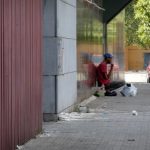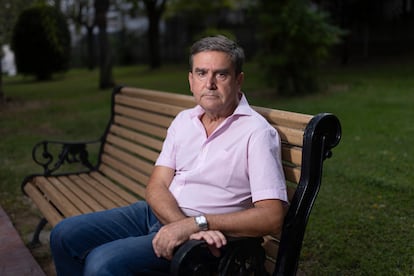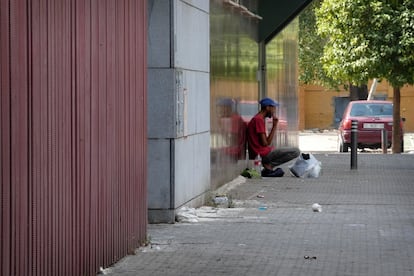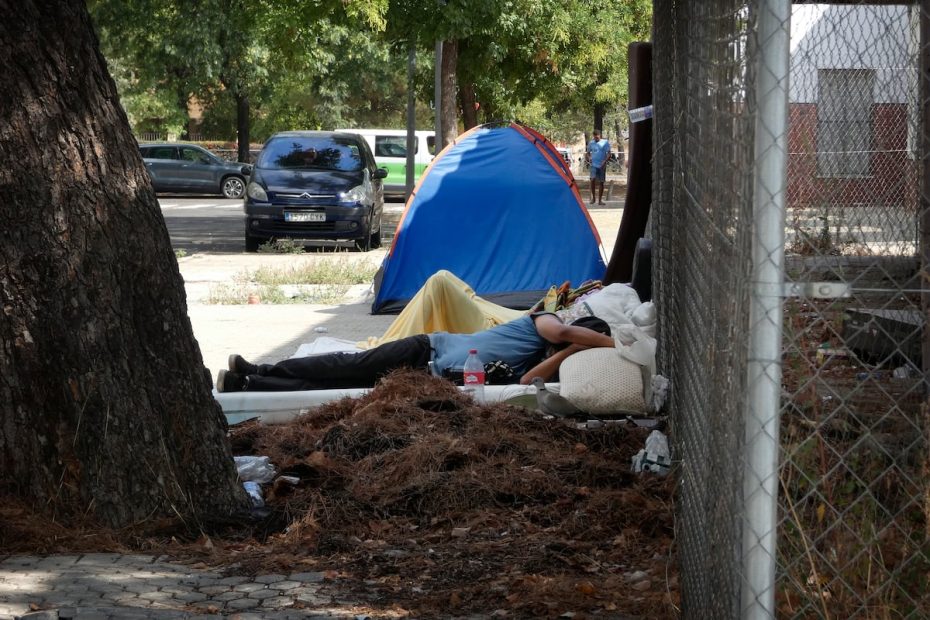

Drug addicts carry, among all their serious problems, a danger that is sometimes accidentally inflicted by regional governments: the cocktail of methadone with tranquilizers causes respiratory depression and often death, since their bodies suffer from weakened organs. The network of 2,400 doctors and psychologists who treat addictions in drug addiction care centers are overwhelmingly outside the 17 regional health systems, causing a problem that can cost many their lives.
Only the Valencian Community, the Basque Country, Castilla-La Mancha, Asturias, La Rioja and Murcia have these doctors integrated into their health services to ensure that patient information flows between psychiatrists, psychologists, nurses and family doctors. In certain areas of Catalonia they have also achieved this integration to achieve a holistic approach and in the process avoid that mixture of methadone and tranquilizers, which is sometimes prescribed by mistake in emergency services or in health centers.
“The risk is very high. Even though it is reckless, the system resists. The drug addiction care centers are not yet computer integrated, it is a black hole,” criticizes Néstor Szerman, psychiatrist at the Institute of Psychiatry and Mental Health of the Gregorio Marañón Hospital in Madrid and president of the Dual Pathology Foundation. Aside from the six exceptions, the other 11 autonomies have the objective of integrating the doctors supported by the Ministry of Health, but it is a wish that is years late, according to the two scientific societies on addictions, Socidrogalcohol and Dual Pathology.
In the 1980s, mental health was integrated into the national health system, but the Government decided to leave drug addictions aside and four decades later the decision still affects thousands of citizens. In Spain, 44,770 people were treated with methadone during 2022, the last year with figures from the National Drug Plan. In the last two decades there has been a clear decline and patients have fallen by half since the peak in 2002, when 90,488 people were treated.
It has been 26 years since the Valencian Community created the addictive behavior units, which unlike other regions where they are integrated into the area of Mental Health, in Levante it was decided to include them in Primary Care. On the other hand, in Aragon, the situation is very different: “The network is small and atomized, with its own laboratories but without common medical records. A multi-network that is not coordinated at all,” censures Francisco Pascual, president of Socidrogalcohol and coordinator of a center in Alcoy (Alicante).
After years of neglect by the Board, two weeks ago 60 Andalusian addiction doctors slammed their fists on the table and publicly warned of the high risk faced by drug addicts who receive methadone in that community. “The data does not cross and there are separate networks. They are drugs dispensed in parallel networks and so far the Board has given us two answers: the incompatibility of the two computer systems and data protection,” accuses Bartolomé Baena, president of the Andalusian Medical Society of Addictions and Associated Pathologies (SOMAPA). These doctors denounce the comparative grievance they suffer from doctors at private health centers with full contracts, such as the Pascual group, who have access to patients’ clinical records without any hindrance. The health professionals who care for addictions in this community depend on Provincial Councils, City Councils and NGOs.

The regional Executive (PP) advances that it is working to unite both computer networks, Diraya and Sipasda, and limits the problem to a regulatory problem due to data protection, although it recognizes that it has been going on for a long time. “Informatically, it can be done, we have to see how to do it normatively. Our idea is to see with addiction doctors the most immediate formula to solve it,” says a spokesperson for the Andalusian Ministry of Health and Consumer Affairs. However, the Somapa medical society has only received delays in its meeting requests from the Board.
It has been six years since the Government of La Rioja (PP) solved the IT and regulatory obstacle that Andalusia poses. “We made an agreement so that our Selene computer system could share its patient information with associations that treat addicts. With two fundamental points: the informed consent of the patient and the time limit so that the data is only shared during the time the patient is treated,” illustrates Carlos Piserra, deputy director of Mental and Emotional Health Strategy of the Rioja Executive. Aside from the agreements signed with the Arad Association and Proyecto Hombre that treated 116 drug addicts last year, this region identified the problem of sharing clinical information with doctors in nursing homes and the obstacle was also resolved.
In Galicia, for example, addiction doctors are not integrated into the health service in an organic way, but they are integral, so they have access to the Sergas computer system and can access electronic medical records, prescriptions and requests for evidence. In the Balearic Islands, with the exception of Palma, the integration of doctors is equally partial.
“The comprehensive approach to addictions avoids contradictory indications to the patient, mental health problems and phenomena associated with withdrawal such as psychotic symptoms. In addition to helping families, who are exhausted and frustrated,” recalls Carlos Roncero, psychiatrist and president of the Dual Pathology Society.
The vulnerable group of 44,770 people who consume methadone in Spain suffers an added risk due to the dysfunctions of the regional health IT systems. For example, when a patient changes doctors and he prescribes benzodiazepines – tranquilizers – without the addict remembering in the consultation that he takes methadone. “When the patient goes to their family doctor, the methadone is not reflected in the Diraya system and they cannot be notified because there is no direct communication,” warns Edmundo Cartagena, a doctor in the Polígono Sur neighborhood of Seville. Baena emphasizes in this regard: “In theory the family doctor can look for a module [del sistema informático] which allows you to watch our program [de adicciones] But no one does that because they are very short of time and it is not operational.”

This latent risk seems more likely in cities than in towns, where health workers know the faces of addicts well. “The combination [tranquilizantes y metadona] It can happen, although I am not aware that it has happened. By default we do not check if they have prescribed methadone, although we generally deny tranquilizers,” says Ana Gómez, an emergency doctor in Sevillian health centers and fifth vice president of the College of Physicians of the Andalusian capital. In Tarifa the situation is different: “If we need information we have their records and all those on methadone are given absolutely nothing, sometimes placebo. They are very controlled,” says Ángel Carlos Manzano, care coordinator at the health center in that Cadiz town.
In Andalusia in 2022, 313 people died from a mixture of psychotropic drugs, of which 98 consumed methadone, according to the Board’s latest report on the matter published this summer. This newspaper has asked the Government for details of how many combined methadone and tranquilizers, but has not obtained the information under the pretext that it is no longer published. Of course, old statistics do reveal that this lethal cocktail killed 59 people in Andalusia in 2015 and was the most frequent combination (31%) in autopsy reports. All these deaths are not attributable to the administrations. Addicts consume methadone outside of official circuits because others do not take it and sell it. Today, in autopsies there are about 35 deaths a year due to polyconsumption of drugs, according to figures from the forensic pathology services of the Andalusian Institutes of Legal Medicine (IML).
“Since there is no recognized specialty for additions, it is absolutely incredible that there is not at least an integrated higher committee, as in oncology, that deals with the treatment protocol and decides who acts first when comorbidities exist. That is, when alcohol, cocaine, depression, and liver and heart problems coincide; addiction complications, medical and mental. Patients find that there are three doors to knock on. And to this is added the great problem of stigma. In the end everything works based on goodwill programs. It is time for the autonomies to move from good words to actions and provide resources to coordinate,” urges Fernando Rodríguez, researcher at the Ibima Institute of Malaga and former coordinator of the Addictive Disorders Network.
The Andalusian Administration’s promise to turn around addiction care comes from afar. In 2019, the Board guaranteed “an effective integration” of care for the 53,000 drug addicts in the region in the catalog of the Andalusian Health Service. “The addict is not the addict, but rather he is a chronically ill person and this pathology has to be integrated within the SAS, like any other (…) It is an issue that is very clear to me,” said former Minister of Health and Families Jesús Aguirre, today president of the Andalusian Parliament. It remains to be seen if five years later the current counselor, Rocío Hernández, sees it as murky or as transparent as Aguirre and if it translates into facts.
